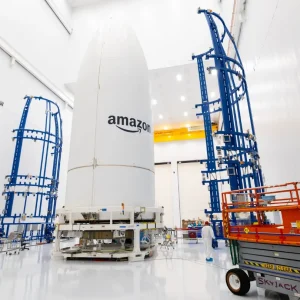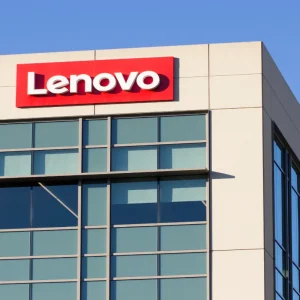
To what extent has the storage market evolved in recent months?
There’s a huge amount of confusion right now. There are a lot of new concepts: obviously, cloud has been around for a while, but also software-defined data centre (and software-defined storage as a subset of that), things like flash – a lot of individual technologies. Plus there is a lot of marketing money coming from start-ups, some new entrants into the storage market like VMware, and like Microsoft that had never played in storage before. What’s happening is the market is very confused with all of this messaging.
How do you view the market now?
Our view of the world in storage has not changed. Actually, what customers need to look at are three basic concepts that we’ve always looked at in storage. The first is that each application has some kind of service level attached to it. It needs to perform, it needs to scale, it needs to be supported down to the unique aspects of that application, what we would call a service-level agreement (SLA).Then there’s a cost point that the application needs to operate at. So, how much is the internal business or department going to pay for that service?
Then there are the operational requirements – how we’re going to manage that service in the data centre. Despite all of the complexity, new business models, all of the different ways in which storage is being mooted can be done, all those three principles remain the same. There’s the right kind of storage for the right kind of SLA cost point and operational model. On that basis we have a strategy that will cover customers at different stages in their journey.
How can we categorise the different types of storage available today?
Many customers will have different applications at different stages in their journey. The first part of it is traditional storage. So, there are some customers that have applications, and these may be core banking systems on a mainframe, they may be a telco billing system that’s been in existence for 25 years; customers that want to leave that subset of infrastructure alone, they don’t want to change it.
For that part of the market HP will continue to provide traditional storage systems. Within that traditional world there is a model that is very expensive. We’ve seen a decline in the market, according to IDC. High-end storage declined 25% in the past year and clearly customers are moving away from traditional, expensive storage. But for those customers who have those traditional legacy applications we will continue to support them and we believe it’s in our interests to do that.
The second category of storage we would call service-defined storage. So for HP, this involves our portfolio around 3PAR in the primary storage space and StoreOnce in the backup space.
These are new-generation architectures that provide a very high quality of service. They’re providing that backup recovery, easy management – all the things that mission-critical applications require. We believe customers need that service-defined storage and will continue to need that.
The third category is what we would call software-defined storage. And this is where we have the functionality of storage taken out the array and it’s now resident on an industry-standard server or software. What you’ll do is hang a box of industry-standard, unintelligent disks in a box or shelf off the back of the server, but the server itself has the functionality to drive a storage area network. In HP terminology, this is our StoreVirtual platform – a platform we acquired from a company called LeftHand about four years ago. The rest of the market is waking up to software-defined storage, but we’ve got 150,000 instances of this already.
Then there’s a fourth category of storage, which we’re calling server-defined storage. In this area we have particular cost points and nuances for storage solutions for a very large deployment, so things like big data; basically, large increments of very cheap storage for specific big data-style applications. We have a number of server-based storage portfolio items.
How are you putting this message across to potential customers?
What we’re trying to do is simplify all of this for customers – forget about all the buzzwords. There are different types of storage to suit all the different types of applications, depending on that service level and that price point.
Clearly the shift has come from everybody putting all of their data on high-end or mid-range storage as a kind of single platform architecture, and the world is shifting to optimising different platforms for different styles of application.
HP has introduced the concept of ‘The Machine’. What’s that about?
Yes, there’s this other theme emerging – the concept of ‘The Machine’. What we’ve done at HP is pretty uniquely build a portfolio of servers, storage and networks. We’re trying to play out to the market that we have the best products in each of those categories, but, when combined together, we provide a uniquely all-HP converged infrastructure offering that we’ll guarantee will work and is open. We’ve also now got management tools like OneView that will manage across all of the server, storage, network estate – so all of this is what we’re referring to as The Machine.
What we’re doing is innovating in these server, storage and network spaces to take levels of efficiency to greater heights for our customers, and The Machine is a working example of where some of the technologies are going to go. So, for example, in the storage space we see flash is becoming affordable. On the server side we’re taking out the concept of copper networks that require heat and power and moving towards photonics – the concept of using fibre and light to move data around the server. All of these technologies exist. It’s really about giving our customers a roadmap towards the next generation of data centre technology.
What advice would you give to companies selecting storage solutions?
As these trends start to come together we know that traditional high-end storage is too expensive, but there’s a massively appealing tactical alternative to that, which might be to start putting some of those high-performance, mission-critical applications on a flash storage platform. That would give them super performance beyond what they’ve had before at a cost point that’s acceptable.
Then it’s a case of looking at applications, like SLA-oriented applications, and applying a combination of technologies, alongside more cost-effective storage. Vendors really need to work alongside customers to help make that application deployment happen.






